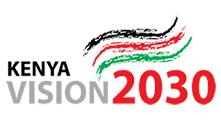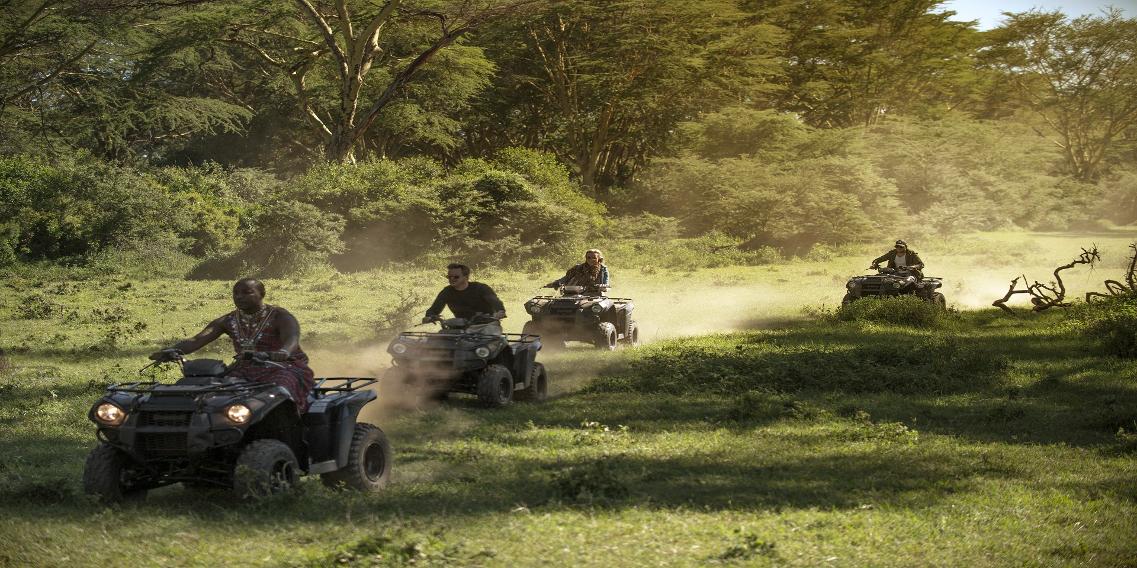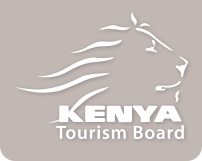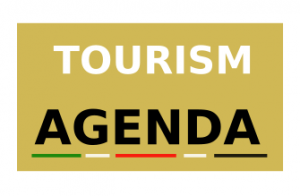About KENYA
General Info
LOCATION
Kenya is located on the East Coast of Africa. It lies across the equator and covers an area of 582,646 square kilometers and a maritime border of 536Km along the Indian Ocean. It is geo-strategically located at the confluence of the Great Lakes, Horn of Africa and the Indian Ocean contiguity, making it a gateway to Africa’s major trading blocs such as the East African Community (EAC) and the Common Market for Eastern and Southern Africa (COMESA). It shares a border with Tanzania to the south, Uganda to the west, South Sudan to the north-west, Ethiopia to the north and Somalia to the north-east.
CLIMATE
In the low-lying counties, particularly along the coast, the climate is tropical, hot and humid. On the Plateau and in the highlands the climate is more temperate. Western Kenya and most parts of Nyanza experience heavy conventional rain and have two rain seasons, the long rains from April to June and the short rains from October to November. Kenya's warm climate is favourable for tourism during the drier season that is between September and March.
PRINCIPAL COMMERCIAL CITIES and TOWNS
-
Nairobi is the capital city and a commercial centre. It lies midway between the capitals of Uganda and Tanzania. It is the largest city in East Africa and houses two UN agencies, United Nations Environmental Programme (UNEP) and UN-Habitat, making it the only host to the UN headquarters in the global south.
-
Mombasa is Kenya’s main port and a popular holiday city. It is situated on an island in a natural sheltered inlet. It is the only port that serves not only Kenya but land locked countries like Uganda, Rwanda, Burundi and Eastern Democratic Republic of Congo and Southern Sudan.
-
Kisumu is the Chief Port city on the shores of Lake Victoria. It serves western Kenya, Uganda and Tanzania.
-
Nakuru is an agricultural, manufacturing and tourism city in the Rift Valley basin.
-
Eldoret lies on the main road and rail route to Uganda. It is mainly an agricultural town that serves wheat and Maize farmers from the North Rift.
-
Kenya has a population of 47.6 million people (2019 pop. census). Nairobi is the capital city with a population of approximately 4 million people. Other cities are Mombasa, Kisumu and Nakuru. There are two official languages in Kenya; Kiswahili and English. Kiswahili is also the national language .
INTRODUCTION
-
Kenya is bestowed with well over 40 different ethnic groups with different languages and dialects, traditional arts & crafts, architecture in homestead designs, clothing and jewellery, food, social and economic activities. Successive migrations and invasions, right until the British colonisation in the late 19th Century, have left their mark in the rich mixture of tribes, race and customs seen in Kenya today. If any one thing of Kenya speaks of this unique character, it is the modern melding of traditional societies and culture. Kenya’s culture is both diversified and fragmented, born of myriad sources and influences both new and old generations.
-
One can easily experience a blend of modern and rich traditional lifestyles. For many visitors to Kenya, this is evident within minutes of arrival. It is possible to leave Nairobi, a city with a thriving business heart powered by the latest information technology, and drive in just a few hours to a place where life is lived in accordance to tradition and custom.
FOOD
-
Kenyan food includes a variety of African and Indian recipes. Ugali (made from maize or millet flour), nyama choma, beef and goat-meat stews are some of the favourite dishes in Kenya. Use of spices and coconut feature in Kenyan cuisine. Indian food such as pilau rice, samosas and chapatis are often eaten with meals. Tea and coffee are served very hot.
ETHNIC COMPOSITION
-
Cushites: This group includes the Somali, Oromo, Rendille, and Borana among others.
-
Bantu: This includes the Gikuyu, Luhya, Kamba, Embu, Meru, Kisii, Mijikenda, Taveta, Taita, Pokomo, Bajuni.
-
Nilotes: Includes the Luo, Kalenjin, Maasai, Teso and Samburu.
RELIGIONS
-
Protestants : 38%
-
Catholics : 28%
-
Indigenous religions : 26%
-
Muslims : 7%
-
Others 1%
LANGUAGES
-
English (Official), Swahili (national), local languages.
MUSIC
-
Traditional Song and Dance
Songs and dance have always played an important role in African culture, used especially to mark important events and ceremonies. For example, the Maasai had the Engilakinoto, sung after a victorious lion hunt. Structured around a deep rhythmic chant it is accompanied by a spectacular dance in which warriors display their strength and prowess by leaping directly and vertically into the air.
The Luhya of Western Kenya developed a very distinctive dance style called Isukuti. This extremely energetic dance is usually performed by paired male and female dancers, and accompanied by several drums, bells, long horns and whistles.
The Kamba and Chuka people both developed a distinctive drumming style, in which a long drum is leant forward and clasped between the thighs. The Kamba were well known for their athletic, almost acrobatic dancing. - Taarab
On the coast, the growth of Swahili culture saw the growth of a unique style of music, called Taarab. Combining elements of African percussion with Arabic rhythms, Taarab become a popular form of music that remains a coastal favourite today. - Benga
The first Kenyan recording studio in 1947, and local musicians inevitably set about defining a national sound. The two main influences are from the South, South African Jazz and Zimbabwean ‘highlife’ guitar work; and from the West, the distinctive rumba rhythm of Congolese pop. A hybridized form of music evolved- widely known as Benga, and usually rather tribally targeted. Singers sung in their own tribal language, resulting in strong ethnic followings. Many of these artists remain popular today, such as Luo musician DO Misiani , Luhya legend Daudi Kibaka and venerated Kikuyu singer Kamaru.
Others include:
-Daniel Owino Misiani – Shirati Jazz ,Collela Mazee,Ochieng Nelly Mengo ,Ochieng Kabeselleh, Gabriel Omolo
- Sukuti guitarists George Mukabi, Shem Tube and John Mwale of the '50's, and Sukuma Bin Ongaro of the '80's
- Kikuyu pop artist Joseph Kamaru, Peter kagia, and Councilor DK
- Peter Mwambi, Kakai Kilonzo and Katitu Boys who use the Akamba dialect
The 2010 Constitution established the structure of the Kenyan Government.
The
Government of Kenya consists of the Legislature, the Executive, the Judiciary
and the Devolved Government.
-
THE EXECUTIVE
The President of the Republic of Kenya, the Deputy-President and the Cabinet Secretaries comprise the executive. The President is the Head of State and Government. He is the Commander-in-Chief of the Kenya Defence Forces and a symbol of national unity. The Deputy President is the principal assistant of the President, and shall deputise the President in the execution of Presidential functions. The President shall nominate and, with the approval of the National Assembly, appoint Cabinet Secretaries. A Cabinet Secretary shall not be a Member of Parliament. The President is elected directly for a 5-year term. In order to win, a candidate must garner 50% plus 1 votes and 25% of the votes in half of 47 counties.
For further information on the President, please click on the following link http://www.president.go.ke
The Deputy President is the President's principal assistant. For further information on the Deputy President, please go to the website: www.deputypresident.go.ke
-
THE JUDICIARY
The Judiciary is divided into Superior Courts and
Subordinate Courts. The Superior Courts are: the Supreme Court, the Court of
Appeal and the High Court. The Supreme Court is the highest court in Kenya. The
Subordinate Courts are: the Magistrates Courts, the Kadhi Courts, the Courts
Martial and the Tribunals.
For further information on the Judiciary, please click on the following
link http://www.judiciary.go.ke
-
THE DEVOLVED GOVERNMENT
T he Kenyan Constitution established 47 Counties, each with its own Government. The County Governments consist of the County Assembly and the County Executive. The County Governor is the head of the County Executive.
The 47 Counties are as follows: Mombasa, Kwale, Kilifi, Tana River, Lamu, Taita-Taveta, Garissa, Wajir, Mandera, Marsabit, Isiolo, Meru, Tharaka-Nithi, Embu, Kitui, Machakos, Makueni, Nyandarua, Nyeri, Kirinyaga, Murang'a, Kiambu, Turkana, West Pokot, Samburu, Trans Nzoia, Uasin Gishu, Elgeyo-Marakwet, Nandi, Baringo, Laikipia, Nakuru, Narok, Kajiado, Kericho, Bomet, Kakamega, Vihiga, Bungoma, Busia, Siaya, Kisumu, Homabay, Migori, Kisii, Nyamira and Nairobi
-
Kenya is host to the only United Nations headquarters in the Global South, and forms a vibrant community of several UN agencies that include; the United Nations Environment Programme (UNEP) and the United Nations Human Settlements Programme (UN-Habitat) both of which have their headquarters in Nairobi. Other agencies with Regional offices in Nairobi include the FAO, IFAD, ICAO, ILO, IMO, IMF, UNIFEM, UNDP, UNODC, UNESCO, UNHCR, UNIDO, UNICEF, UNPOS, UNPF, UNAIDS, World Bank, WFP, WHO and UNCRD.



















